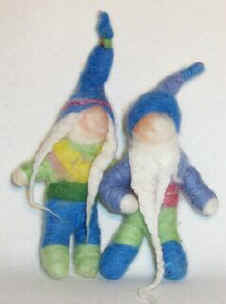SUGGESTED SUPPLIES

I have tried here to provide a list of 'essential' supplies you should try and obtain to help you homeschool using Steiner methods. Some of these you may well have already at home, others will need to be obtained from shops that specialise in Steiner products.
A set of good quality, natural pigment watercolours - poster paint is absolutely no good for wet-on-wet painting and in any case the colours are usually too strong.
Watercolour paper - I have used ordinary paper (the paper out of my computer printer in fact!), which works ok, but does have a tendency to crease slightly. Proper watercolour paper will stay smooth no matter how wet it gets.
Paint brushes - at least one of them will have to have to be quite 'wide' for wetting the paper before painting commences.
Empty baby food jars (or similar) - for mixing colours
Beeswax crayons - block and stick if possible, although we've just got the block ones which are absolutely fine.
Good quality colour pencils
Manila paper - for form drawing.
Sharp scissors - don't bother with the 'child-safe' ones, they hardly cut anything, far better to teach your child how to use proper ones safely.
Glue - basic, run-of-the-mill pva.
A chalkboard
Chalks - in bright colours.
Main lesson books - if possible, the ones that have the onion skin dividers in between the pages, but the ones without the onion skins are fine.
Pieces of fabric - silk, cotton, wool, anything that is natural. Young children will find a multitude of uses for these. When my daughter was playing with a piece of fabric one day, it went from being butterfly wings, a princesses cloak to a ghost costume in the space of about half an hour! They are also good for hiding TV's etc if you cannot have a seperate Steiner room in your house.
A box containing, scrap cardboard, shiny paper, scraps of cloth, wool, buttons etc for various craft projects.
A basket containing nature walk discoveries - ie pinecones, pebbles, seashells, pieces of wood, feathers etc. Again, young children will always find some way of incorporating these into a game.
Wool - fairly chunky wool, in various colours, for finger knitting.
AND FINALLY............
Simple, wooden toys. Toys that allow your child to use their imagination rather than doing everything for them. Wooden toys look beautiful and are so much more pleasing to handle.